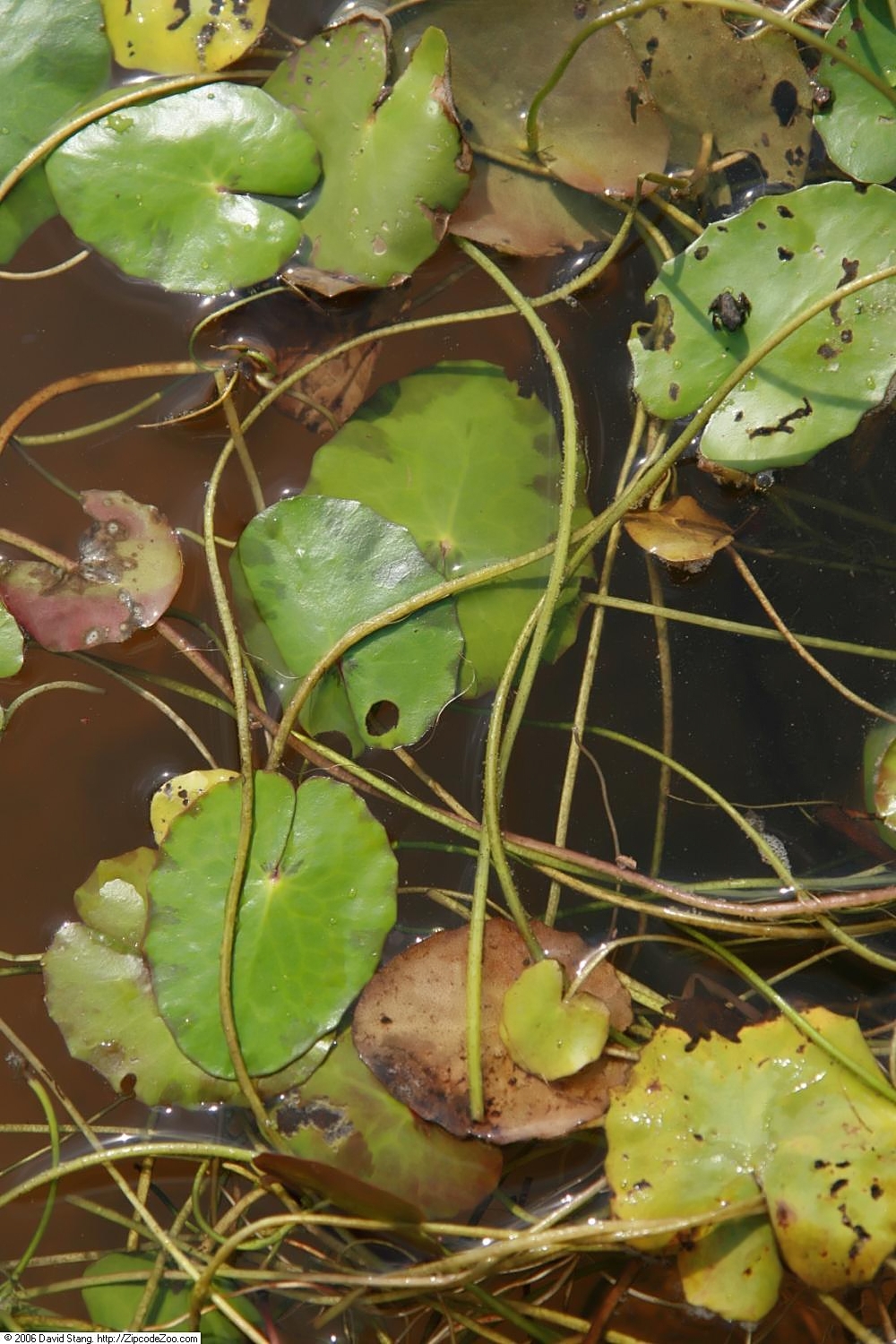Nymphoides peltata
Description
- A perennial, water lily-like plant that carpets the water surface with long-stalked heart-shaped leaves (3-10 cm diameter)
- Showy five-petaled (with distinctive fringe along edges of petals/flower edges distinctively fringed) yellow flowers (3-4 cm diameter) occur on long stalks and rise a few inches above the water
- A native of Eurasia (Eastern Asia) and the Mediterranean area as well as Japan, China, and India
- Sold yellow floating heart as an ornamental water plant because of its attractive yellow flowers and floating leaves; popular aquatic garden ornamental for water gardens
- Prefers slow moving rivers, lakes, reservoirs, and ponds; can also grow on damp mud/mudflats
- Tolerates anaerobic environments
- Reproduces by water-dispersed seeds (flat, oval, approx. 3.5 mm long, hairy edges) and by new stolens. Broken off (leaves with part of a) stem will also form new plants
Consequences of invasion
- Grows in dense patches, excluding native species and creating stagnant areas with low oxygen levels underneath the floating mats
- Creates desirable mosquito breeding habitat
- Mat-like patches impede recreational activities such as fishing, water skiing, swimming and boating
Status in the CKISS region
- Yellow floating heart is currently classified as Prevent on the CKISS Annual Priority List.
- It is also classified as Provincial EDRR by the provincial government, and is managed by the Province.
- Please report any sightings immediately to the Province.
- To learn more about how CKISS classifies and manages invasive species, see our Invasive Species Priority Lists page.
Integrated pest management options
- little information is available on the control of N. peltata; however, mechanical and hand removal would most likely be effective if no plant parts were to escape; cutting, harvesting, covering with bottom barrier materials

